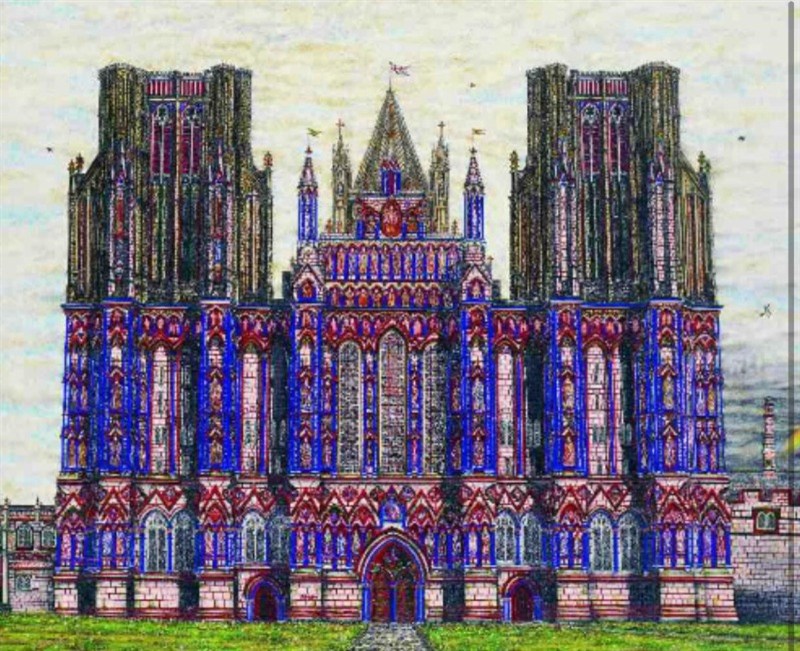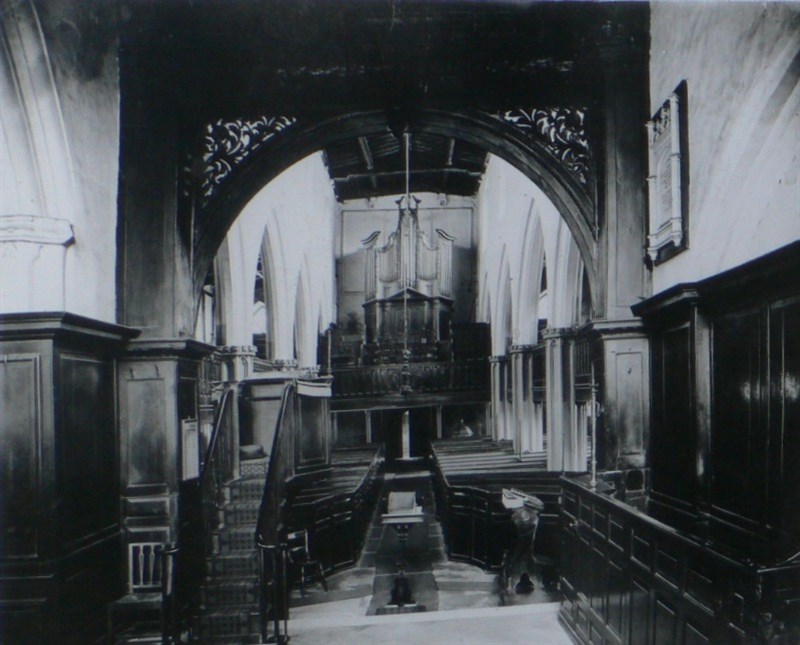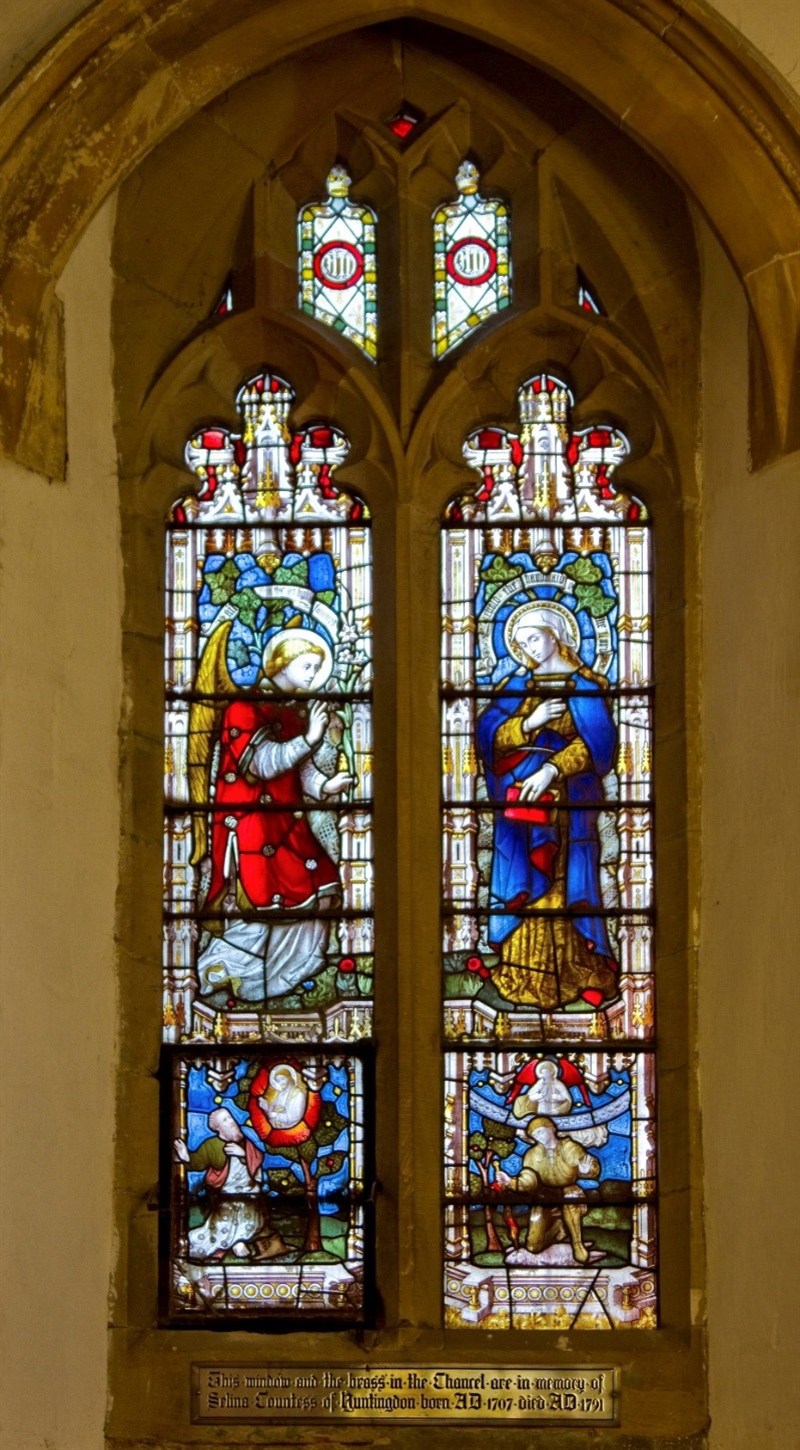Why do we miss being in church so much?
This is a personal view. I’ve been thinking about this a lot, recently, while we cannot go into the church, even on our own for private prayer. Jesus said (Matthew 18:20) “For where two or three are gathered in my name, I am there among them.” More than two or three of us are gathered together on Facebook every day - so why do I miss the church building so much?
To answer this, I need to take you back to the high medieval, pre-Reformation church. Our St Helen’s was built at this time, in the early 1470s, replacing at least one previous church. It would have been a very different building at that time. Imagine walking into a church full of colour and light, smells and sounds. The walls and columns would almost certainly have been covered in paint, perhaps wall paintings of bible stories or tales of the saints. Graffiti was encouraged, as a personal form of prayer! Stained glass windows would similarly have told stories to help the illiterate to understand the bible – remember there were no bibles in English until 1535, and most people did not speak Latin, the language of church services. Some major churches and cathedrals were painted on the outside, too.

Artist's impression of the West Front of Wells Cathedral when it was painted
Inside the church there would have been a chancel screen, painted with images of the saints and prophets. The cult of saints was at its height, and local saints – probably some you have never heard of - were important. Above the screen would have been a rood beam and the Great Rood, a huge cross on which Christ hung, with the Virgin Mary on one side and St John on the other. People found this a shocking image at the time. They were scared of Purgatory, of hanging round in a painful ‘entrance hall’ to heaven, and believed that the prayers of the living could shorten this time. If you could afford it, you could guarantee prayers by buying something for the church: a statue, silver chalice or other church plate, cloths for the altars (there would have been several), vestments for the priests, candles. Burials, if you could afford to be buried within the church, would have been covered with a slab, reminding everyone who passed over it that you needed their prayers. We have an example of this in Robert Nundi’s slab. The church (with smaller north and south aisles) would have been packed with ‘stuff’.
So coming into church would have given us a highly sensory experience. The service would begin with a procession of the clergy, wearing glorious, embroidered vestments, carrying candles and swinging censors. The procession would go to cense each altar before finishing in the chancel, behind the screen. This was out of bounds to most people; only the clergy went there, although we would have been able to see something beyond it. There would be candlelight glittering on the silverware on the stone altar at the east end. From then on, you and I would spend the time in personal prayer, perhaps before an image of a saint, on our knees. There would have been few seats: some at the front of the nave, perhaps, for the wealthiest, but the rest of us might have brought our own stools for the (short!) sermon. In the chancel, the priests would be speaking in Latin, and if we could hear at all it wouldn’t make much sense. At one point a bell would ring, and we would look up and try to catch a glimpse through the screen of the priest raising the host (wafer). A choir would chant plainsong.

Mid 19th Century St Helen's interior, showing box pews, galleries, high pulpit and remains of Chancel screen
So far, it isn’t difficult to imagine the scene. What IS difficult to envisage, perhaps, is that historians now believe that this was, for most people, a synaesthetic experience. They could “feel” God by handling relics – some tombs were made with holes in so people could climb inside to be closer to a saint’s relics. Holiness was emitted by images and statues. They could “smell” and “taste” God. The church was designed to enhance the use of the senses to give worshippers an overwhelming spiritual and emotional experience.
And then came the Reformation. By the end of the 17th century, St Helen’s had plain glass windows, box pews and galleries with seating facing the pulpit, which was high with a sounding board. There were no images and the walls were whitewashed. The focus was fully on The Word, with long sermons. The altar was no more; communion, perhaps 3 or 4 times a year, was at a wooden table close to the nave. Some churches even had pews in the chancel, facing the pulpit, but otherwise the chancel wasn’t important. The Minister wore a plain white surplice over a black robe. There was no choir but the congregation sang hymns and psalms, though not as we sing them. The senses, other than hearing, were barely involved at all.
You might think that’s where we are today, mostly. But it’s not. In the 19th century, there were two major movements, the Oxford Movement and the Ecclesiologists, who longed for a return to the medieval church. Their ideas changed eighty percent of English Parish Churches, and St Helen’s was one of these. The church was enlarged, the pews and galleries were removed, seating again faced the East End, a new pulpit was smaller, Canon John Denton’s scheme for stained glass windows was completed, a statue of the Virgin Mary was placed in the Lady Chapel, candles came back into use and elaborate chalices were brought out of storage. The communion table was replaced at the east end as an altar, vestments and textiles are used, and pictures and hangings adorn the walls. The choir wears robes.
St Helen’s is essentially a neo-gothic church, in the image of the medieval church. Canon Denton clearly understood the medieval church - next time you are able to go into the building, look at the lower panes in the windows: on the north side (representing the devil in the medieval church) are the prophets, but on the south side, where the sun shines in, are the saints bathed in light and nearer to God. He knew his stuff, did Canon Denton!

So why are we missing being in church? We are still, fundamentally, drawn in by our senses, as were our pre-Reformation forebears. Being in church is an emotional, spiritual and sensory experience. And I, for one, can’t wait to get back in!
Anne Heaton
Article first published in St Helen's Magazine, June 2020.
Julie Starkey, 24/06/2020